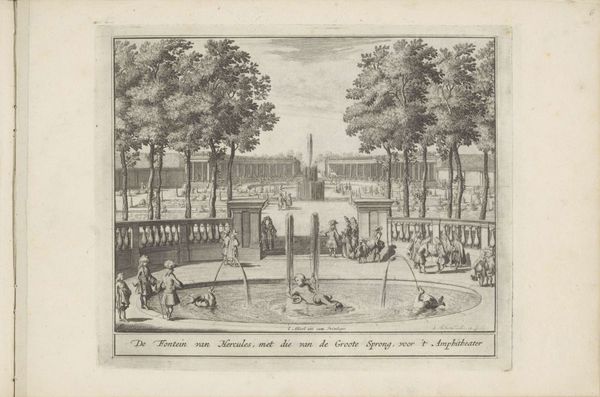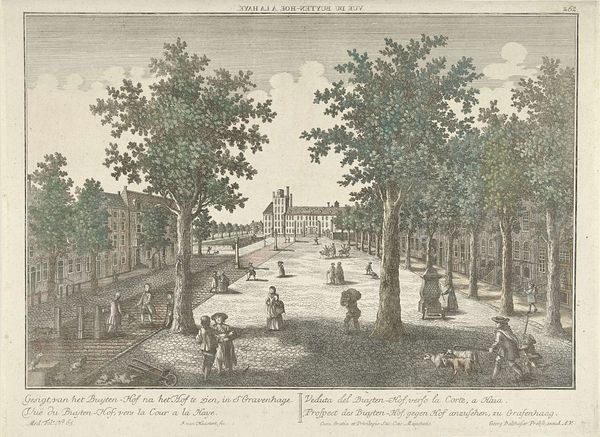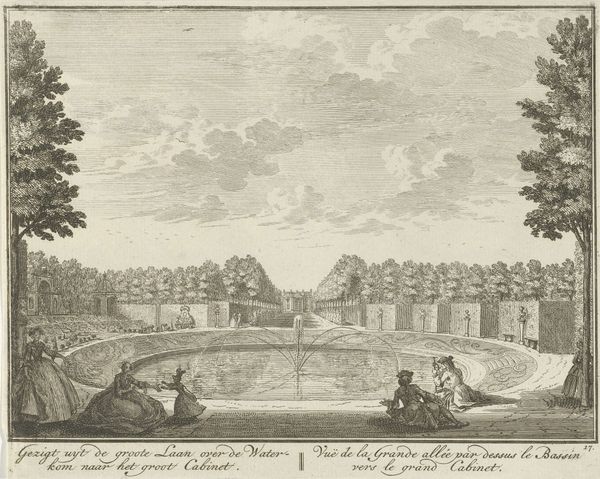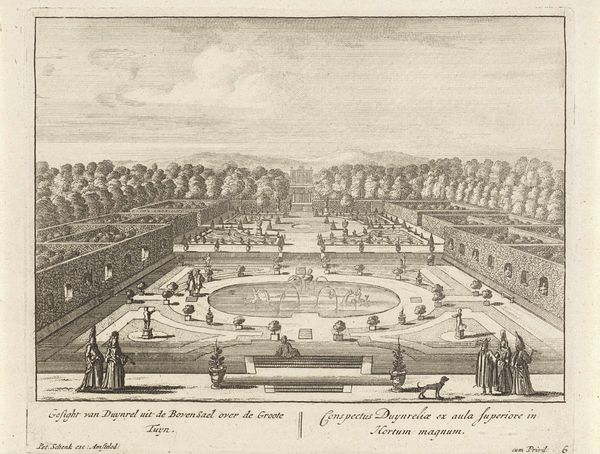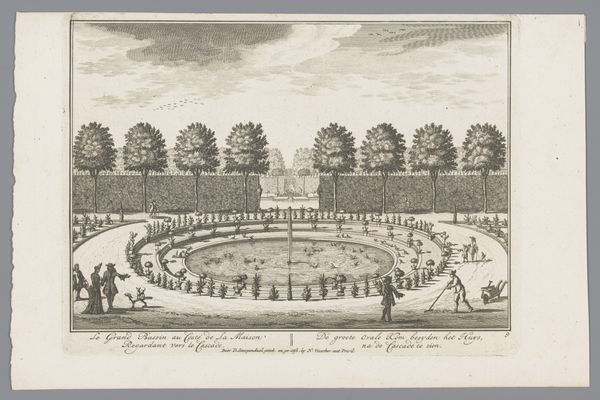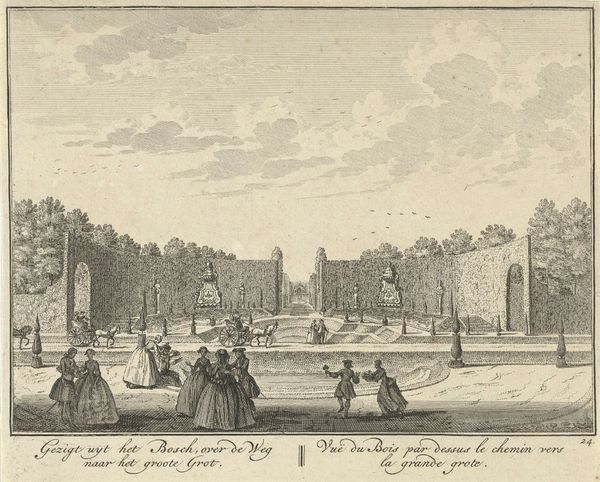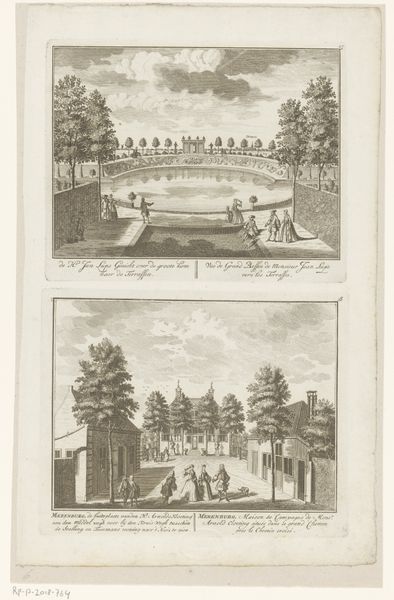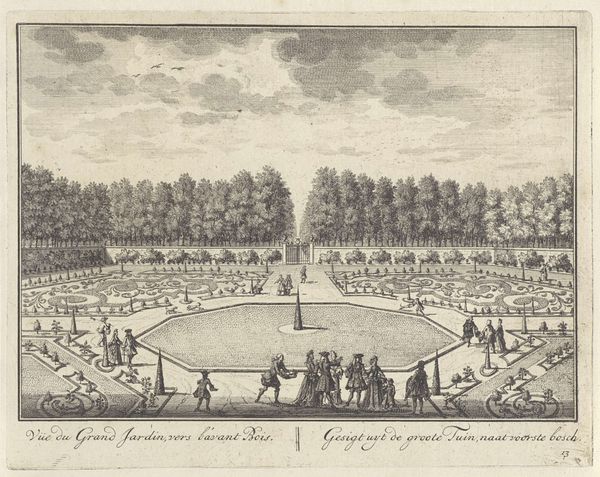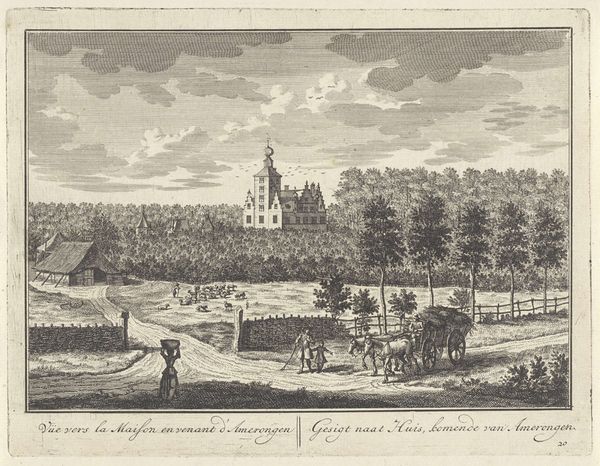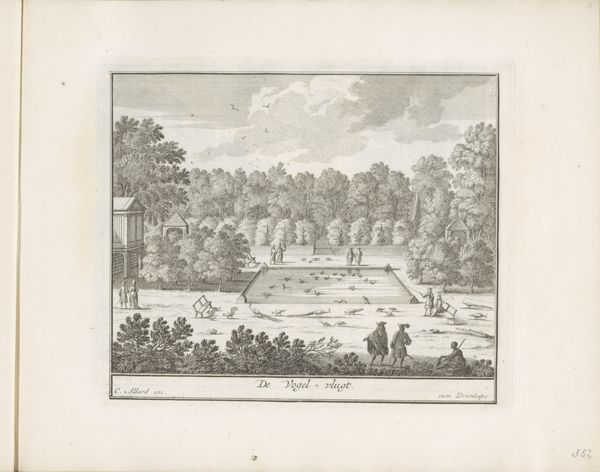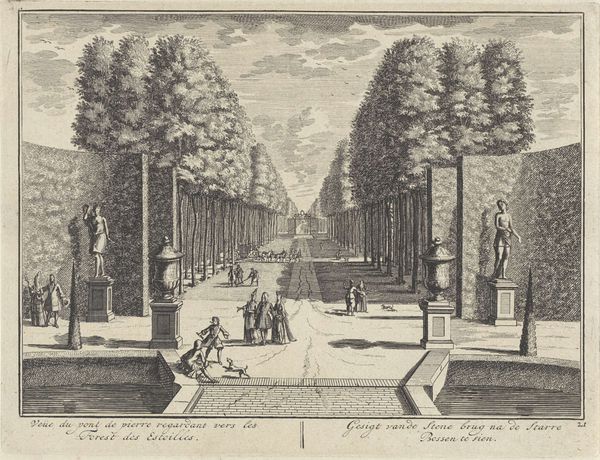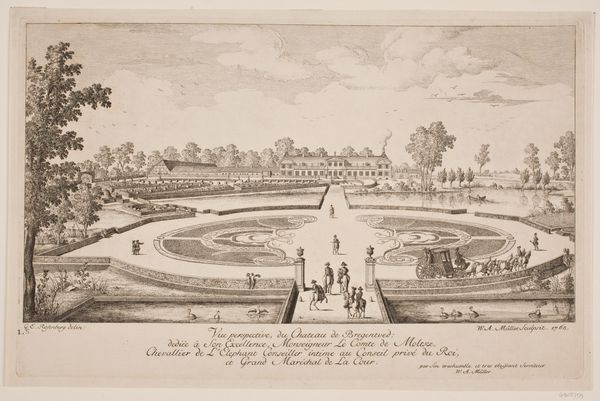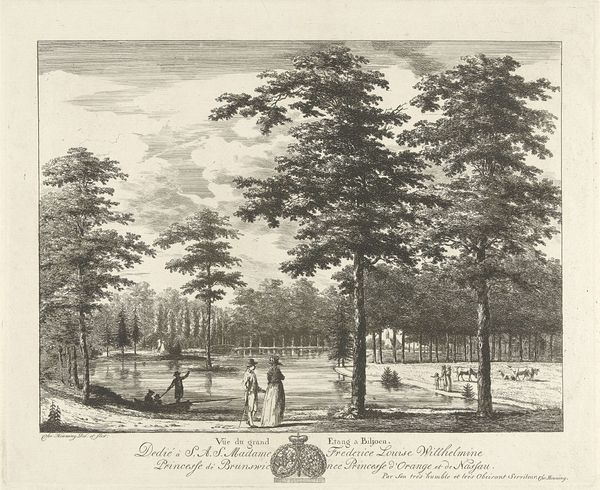
Gezicht op de grote fontein en de Turkse Tent in de tuin van Huis ter Meer te Maarssen c. 1740
0:00
0:00
print, engraving
#
baroque
# print
#
old engraving style
#
landscape
#
perspective
#
cityscape
#
genre-painting
#
decorative-art
#
engraving
Dimensions: height 162 mm, width 201 mm
Copyright: Rijks Museum: Open Domain
Editor: So, this is Hendrik de Leth's "View of the Large Fountain and the Turkish Tent in the Garden of Huis ter Meer in Maarssen," a print from around 1740, housed here at the Rijksmuseum. I’m really struck by how the perspective draws you right into the garden, but the textures look flat. What do you see in this piece? Curator: The charm lies in its formal organization. Consider the balance: the mirrored arrangement of trees and structures along that central axis culminating in the Turkish Tent creates a carefully orchestrated sense of depth. Even though the trees' textures may be "flat" as you described, observe how their linear hatching mimics foliage forms that both flatten and describe it. Are you drawn to the high or low horizon, or the mirroring effect of the body of water, as compositional strategies? Editor: I do see the mirroring now that you point it out, especially with those topiary bushes closer to us. It makes the whole scene very symmetrical. It's like a stage set. Do you think the flattening of the leaves reduces how natural this landscape appears? Curator: Perhaps. However, it may also direct us to observe how such flatness—which can be read across the birds overhead to the dresses of those present in the foreground—calls our attention to this as a constructed space, more representative of an ideal than mimetic of observed nature. Note, also, how the sharp geometries interact with natural elements, the tension there adds depth. Editor: That's a good point; it is all very carefully arranged. So, is it the tension between artifice and nature that’s important? Curator: Precisely. Consider how the artist guides our gaze through perspectival structure and pattern repetition; these guide and structure the viewer’s experience, demonstrating a core interest of Baroque aesthetics, even in printmaking. It prompts considerations about the nature of designed experience itself. Editor: That’s fascinating. I never really considered how much the formal structure influenced the content. Thanks, I’m looking at it very differently now! Curator: Indeed, by appreciating formal constructs we unlock a richer viewing and deeper understanding of art, as it moves beyond what it represents.
Comments
No comments
Be the first to comment and join the conversation on the ultimate creative platform.
